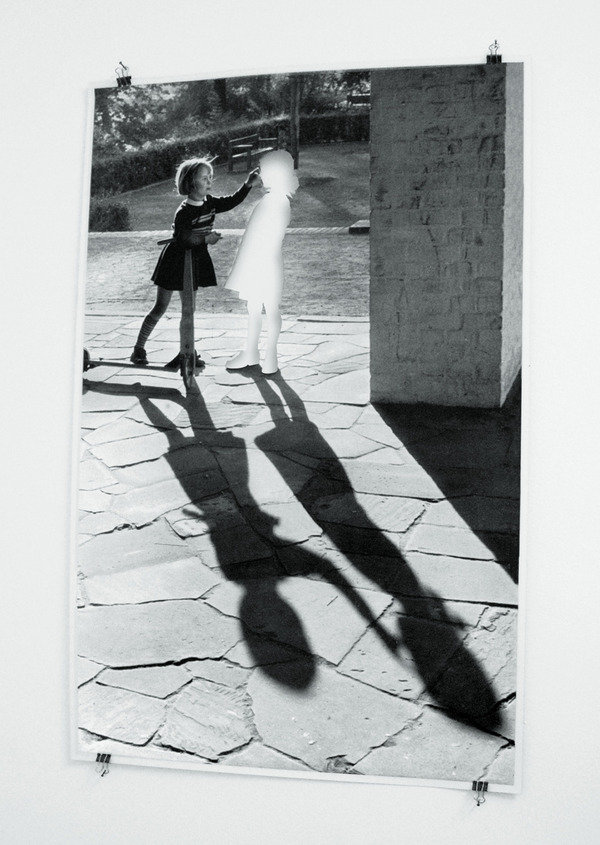Hans-Peter Feldmann
dal 19/6/2012 al 25/8/2012
Segnalato da
19/6/2012
Hans-Peter Feldmann
Bawag Contemporary, Wien
The artist presents works from throughout his career. He rose to prominence in the early 1970s for his expansive photographic series, which opened the door for vernacular images. Often presented in the form of books, posters, postcards, and installations, these collections testify his life-long fascination with the visual culture.

curated by Helena Tatay
Hans-Peter Feldmann (born in Düsseldorf in 1941) rose to prominence in the early 1970s
for his expansive photographic series, which opened the door for vernacular images.
Often presented in the form of books, posters, postcards, and installations, these collec-
tions testify to Feldmann’s life-long fascination with assembling elements of visual
culture.
Feldmann grew up in post-war Germany, where the photographic image was scarce.
During his formative years, he witnessed the expansion of images linked to a boom in
consumer culture. His work from this time reflects a strong engagement with the type
of imagery that surrounded him. His Sunday Pictures embody a set of clichés about
happiness and beauty and are typical of the stock imagery found in magazines,
brochures, posters, and postcards.
A prolific producer of artist’s books, his publications have been instrumental in establish-
ing the genre as a recognisable form of artistic practice, influencing generations of artists
who have followed him. Among the earliest works is a series of booklets titled Bilder
(Pictures), each consisting of a collection of photographs of everyday subjects or situa-
tions. Feldmann’s straightforward treatment of photographic images combines the
seriality of conceptual work with Pop Art’s use of imagery from common culture. His
Time Series, produced during the mid-1970s, expanded upon this, chronicling the most
banal events frame by frame, thereby effectively slowing down the passage of time.
Feldmann makes use of found objects to produce simple and humorous works. Towards
the beginning of the 80s, he began painting classical statuettes in bright tawdry colours.
The figures, which are full of the humour evident in much of Feldmann’s work, playfully
question the dream of ideal beauty on which traditions of Western art are based.
Hans-Peter Feldmann
In the last decade Feldmann’s attention has shifted from photographic images to paint-
ings. He alters traditional portraits painting red noses or crossed eyes on the sitters. With
small gestures, he transforms the paintings, undermining connotations of wealth or
social status. Female nudes are another genre he likes to collect. By painting black bars
on their eyes or genitals, he makes us aware of the social contradictions that weigh
on women’s bodies. Recently, Feldmann has begun to seek out paintings in which only
the sea and sky appear. As with many of Feldmann’s works these carefully considered
collections set up a display of similarity and difference, exploring the richness of variations that can emerge from a familiar theme.
At his exhibition at BAWAG Contemporary, Feldmann presents works from throughout
his career. His work has been exhibited widely, including solo shows at the Solomon R.
Guggenheim Museum, New York (2011), Museo Centro de Arte Reina Sofía, Madrid
(2010), Arnolfini, Bristol (2007), and Musée d’Art Moderne de la Ville de Paris (1992).
It has also been shown in numerous group exhibitions, from documenta 6 (1977) to the
Venice Biennials of 2009 and 2003.
Press relations:
Mag. Christina Werner
w.hoch.2wei.
Kulturelles Projektmanagement
T 43/1/ 524 96 46-22
F 43/1/ 524 96 32
werner@kunstnet.at
Press preview: Wednesday, June 20, 10:30 a.m.
Opening: Wednesday, June 20, 7 p.m.
BAWAG Contemporary
Franz-Josefs-Kai 3 - A - 1010 Vienna



